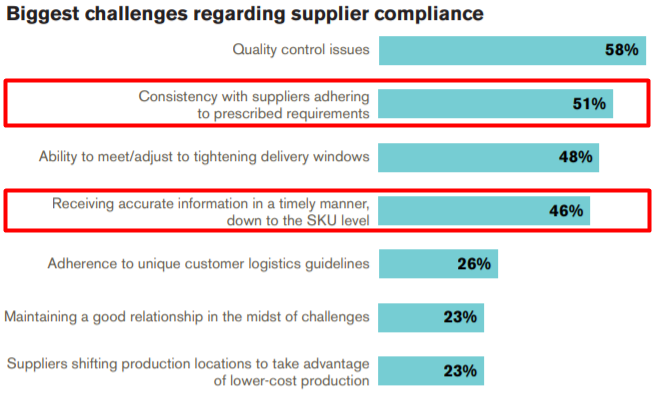What Are Purchase Order Management Systems and Software?

Purchase order management systems and software track and record purchase orders and can even automate repetitive tasks in the purchasing process. Businesses use this software to ensure there aren’t any errors in the procurement process and make the whole process less labor-intensive.
Good purchase order management software is a single source of truth on current purchases. It can provide all the essential information on a purchase, such as where it is in the procurement process. With the majority of B2B purchases happening digitally, it’s important that the entire purchase ordering (PO) process be reliably accurate and efficient.
[toc-embed headline=”Order Accuracy and Tracking with PO Management Software”]
Order Accuracy and Tracking with PO Management Software
From enterprises to individuals, everyone wants to know that the order they get is what they want and when it will arrive. Order accuracy and order tracking are two of the most important purposes of purchase order management software: it can provide information on a SKU level to verify that the correct order is arriving on time.
Despite recent advances in purchase order management technology, not everyone has kept up. A study found that most companies face issues with suppliers meeting their prescribed requirements, and almost half struggle with tracking information on orders.

Identify and communicate bottlenecks
Purchase order management software allows everyone who needs information about an order to access it straight from a single source, like an order management system (OMS) that streamlines electronic procurement for B2B e-commerce. If a purchase hits a bottleneck, all interested parties can identify it and react quickly. The result is a streamlined purchasing process that keeps everyone accountable for efficiency.
If an order does hit a bottleneck, purchase order management software also makes communicating around the order much easier. All stakeholders can see the same information at an SKU level rather than playing a game of telephone through manual order recordkeeping.
[toc-embed headline=”Procurement Automation with PO Management Systems”]
Procurement Automation with PO Management Systems
For many companies, procurement has been stuck in the last decade. Their entire procurement process is done manually or through the limited purchase order management system of an ERP that fails to meet the complex needs of a modern enterprise-scale business. Instead, more and more organizations are moving to a modern, automated procurement system with e-commerce and OMS software, a type of purchase order management system.
Modern B2B procurement goes through distinct stages, each of which can be facilitated by proper use of the software. While many companies have valuable employees bogged down in procurement paperwork, some have found ways to automate parts of the process.
Purchase requisition and authorization
The procurement process begins when a team submits a formal purchase request. That request should include details about what needs the purchase will meet and what specifications it should have.
Purchases of different sizes need to be approved by different people. For example, purchases over $50,000 might have to be authorized by a Vice President. With an automated requisition and authorization process, requests with estimated costs over that amount would automatically send to the appropriate party, along with all necessary specifics.
Negotiation and ordering
Often, the team negotiating and ordering an item is different than the one that initially requested it. That means that miscommunications between groups can lead to errors in the order itself. Given that ordering happens across both digital and in-person channels, miscommunications can occur.
To avoid this, purchase order management software can take details from the original requisition document and bring them directly onto the final order. That prevents human error from costing the company significant time and money.
Receipt, inspection, and payment
When the order finally arrives, the team in charge of inspection can take the same information from the original requisition and confirm that the final product meets those requirements. Then invoicing and payment can go through the same purchase order management system, ensuring the correct party is paid the right amount.
[toc-embed headline=”Key Takeaways”]
Key Takeaways
- Purchase order management software automates and tracks purchase orders.
- Order accuracy is improved through a mutually accessible single source of truth.
- The purchase order process is automated at every stage for increased efficiency and cost savings.
- Order management systems like fabric OMS can automate and track the procurement process while creating similar efficiencies for your outgoing orders as well.

Tech advocate and writer @ fabric.